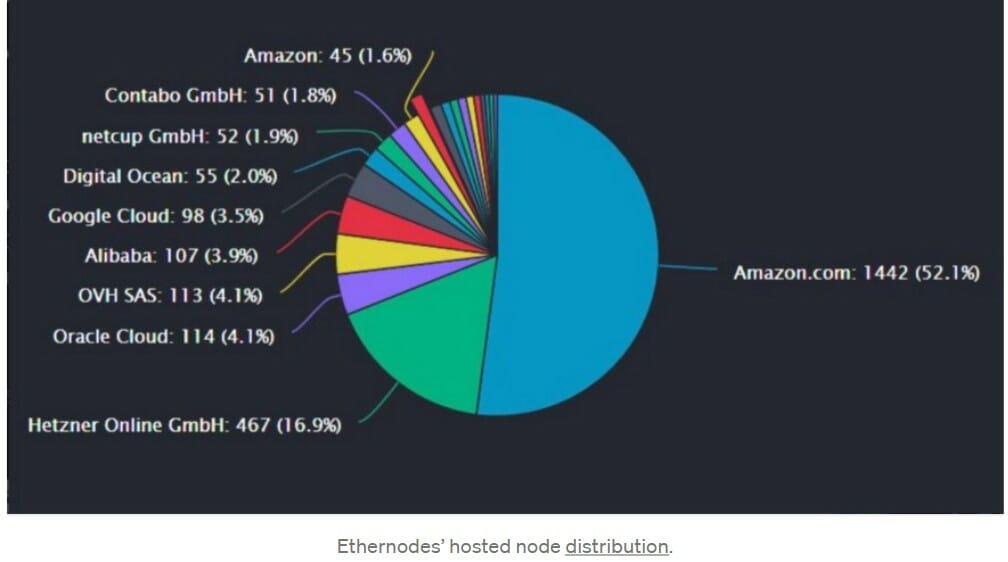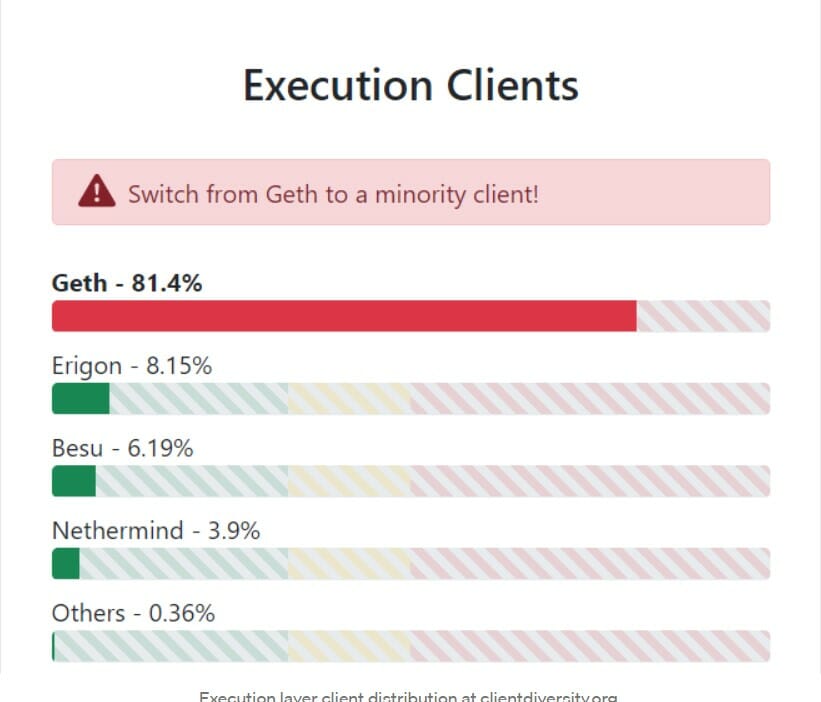Key Takeaways
- The crypto community is debating whether large validators may be forced to censor transactions following the Merge.
- The majority of active Ethereum nodes are being run through Amazon Web Services, which many believe could expose the Ethereum blockchain to the central point of failure post-Merge.
The Ethereum Merge is right around the corner. Slated to happen on September 19, the merge transitions Ethereum Network from a Proof-of-Work (PoW) consensus mechanism to a Proof-of-Stake (PoS) system.
With the merge approaching, so has concerns about centralization, and censorship resistance peaked. Since OFAC recently added Tornado Cash to its list of sanctioned addresses, discussions surrounding potential censorship have plagued the ETH community. The crypto community is debating whether large validators may be forced to censor transactions following the Merge.
A similar concern about centralization is the distribution of nodes. According to research by several analytics firms, U.S. and Germany make up more than 50% of all nodes.
The majority of 4,653 active Ethereum nodes are being run through centralized web providers like AWS-Amazon Web Services, which many believe could expose the Ethereum blockchain to the central point of failure post Merge.

Since the cost of running an individual node is very high, people often turn to cloud infrastructure service providers like AWS.
However, high centralization could soon prove to be a vulnerability for the Ethereum Network in the long term. The majority of validators, i.e., around ⅓ of validators, operate within the U.S. jurisdiction.
With the Merge, staking pools are granted more power to set up validators and handle the overhead of running nodes. The fact that over 60% of staked Ethereum sitting with four entities- 30 % by Lido Finance, 15% by Coinbase, 8% by Kraken, and another 7% by Binance also undermines the idea of security through decentralization. This dominance put into question how decentralized exactly is the Ethereum Network.
Client diversity for both the consensus and execution layers is also becoming a major concern post-merge. While the consensus layer distribution has shown great improvement, the execution layer diversity proves to be a major disappointment.

While clients, including Erigon and Nethermind, have been improving, Geth remains far and away the client that most nodes rely on. In case of a critical bug with Geth, all of the validators that use it for the execution layer would face penalties to their stake.
Post merge, staking service providers should now work towards diversifying their node distribution to ensure better stability, resist censorship and uphold the decentralized nature of the network.









